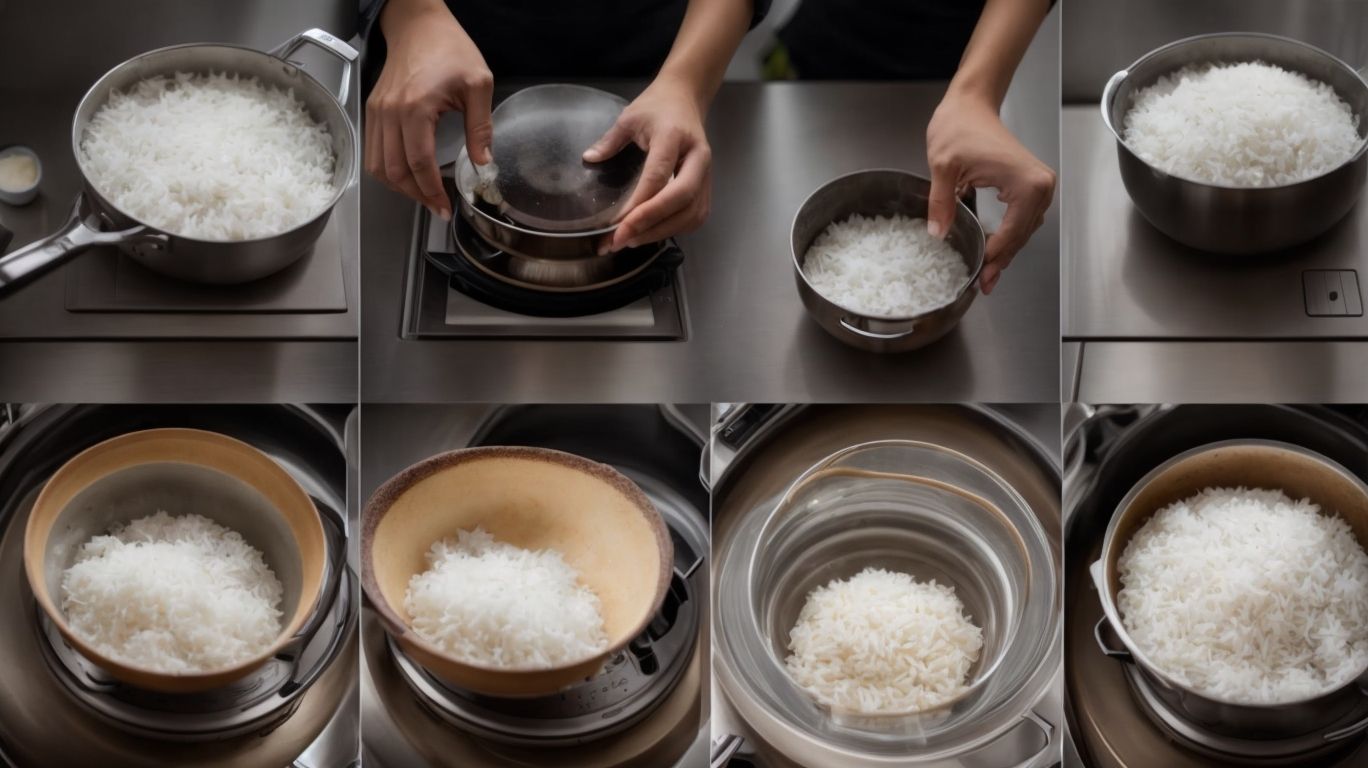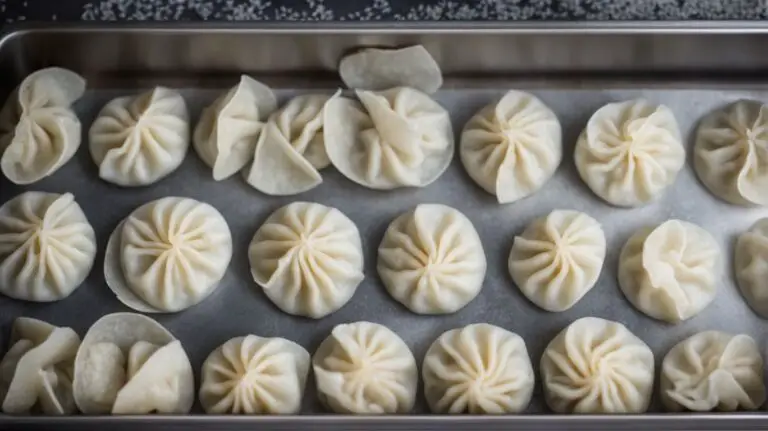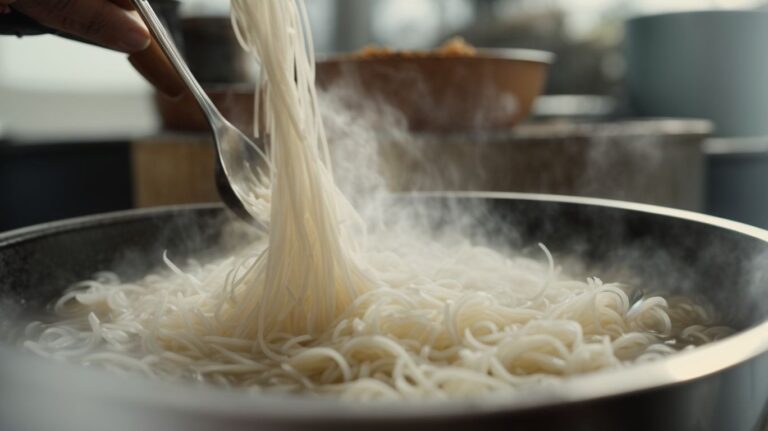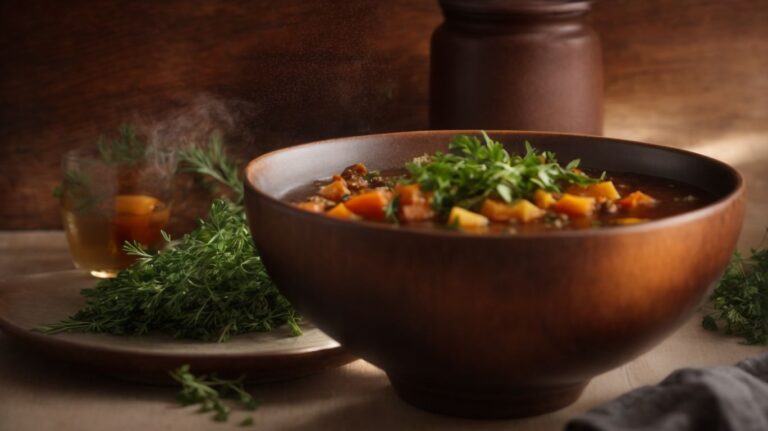How to Cook Rice by Absorption Method?
Are you tired of ending up with sticky or mushy rice? Look no further!
We will explore the absorption method of cooking rice, a foolproof technique that produces perfectly fluffy grains every time. This method retains nutrients, saves time and energy, and results in beautifully separated rice.
Stay tuned for step-by-step instructions, tips for success, and answers to commonly asked questions. Get ready to elevate your rice game with this simple yet effective cooking method.
Key Takeaways:
What is the Absorption Method of Cooking Rice?
The absorption method of cooking rice is a technique where the rice is cooked in a way that allows it to absorb all the liquid it’s cooked in, resulting in perfectly fluffy grains.
This method is commonly used for cooking various types of rice, from long-grain basmati to short-grain sushi rice. By allowing the grains to absorb the cooking liquid, the rice becomes infused with flavor and retains its nutritional value. One of the key benefits of the absorption method is that it eliminates the need for draining excess water, ensuring that each grain is cooked evenly. This technique is versatile as it can be adapted for different recipes, such as pilafs or risottos, enhancing the overall taste and texture of the dish.
Why Use the Absorption Method for Cooking Rice?
Using the absorption method for cooking rice ensures that the grains retain their nutrients, saves time and energy, and results in fluffy, separated grains that are a delight to eat.
One of the key advantages of the absorption method is that nutrients present in the rice grains are preserved, making it a healthier cooking option. Unlike other methods where nutrients may be lost in the cooking water, the absorption method allows the rice to retain its essential vitamins and minerals.
This technique is a time-efficient way to cook rice. Once the rice is brought to a boil and simmered, it simply needs to be covered and left to absorb the remaining liquid, freeing up your time for other tasks in the kitchen.
The end result is perfectly cooked rice with a light, fluffy texture and individual grains that hold their shape. This method enhances the overall quality of the dish, ensuring a satisfying meal every time.
Retains Nutrients
One significant benefit of the absorption method for cooking rice is that it helps retain the essential nutrients present in the rice, ensuring a healthier meal.
When rice is cooked using the absorption method, it allows the grains to slowly and gently absorb the surrounding liquid, ensuring that the vitamins and minerals are not lost in the cooking water. This is particularly important as some of the nutrients in rice, such as B vitamins and iron, are heat-sensitive and can be easily destroyed during the cooking process.
Preserving these essential nutrients is crucial for maintaining a balanced diet and promoting overall health.
Saves Time and Energy
Another advantage of utilizing the absorption method for cooking rice is its efficiency in saving time and energy, making it a convenient cooking technique.
By using the absorption method, you allow the rice to be cooked in a way that traps all the flavors and nutrients within the grains, resulting in a more delicious and wholesome dish.
This method simplifies the cooking process by eliminating the need for constant stirring and monitoring, allowing you to focus on other meal preparations or tasks while the rice cooks effortlessly on the stovetop.
The time-saving and energy-efficient nature of the absorption method not only reduces the overall cooking duration but also minimizes the need for excess water and fuels, making it an eco-friendly choice for your daily cooking routine.
Produces Fluffy and Separated Grains
The absorption method excels in producing rice with a fluffy and separated grain structure, ideal for various culinary dishes and preferred by many for its delightful texture.
When using the absorption method, the key is to allow the rice to slowly absorb the exact amount of water it needs during the cooking process. This technique results in perfectly cooked grains that are neither mushy nor sticking together, ensuring each grain maintains its integrity.
Whether you are preparing a fragrant biryani dish or a refreshing sushi bowl, the fluffy and separated texture achieved through this method enhances the overall presentation and taste of the final dish. This method is a staple in kitchens around the world, favored for creating rice that perfectly complements a range of flavors and ingredients.
What You Need to Cook Rice by Absorption Method
To cook rice using the absorption method, you will need rice, water, a pot with a tight-fitting lid, measuring cups, and spoons, along with a fork or rice paddle for fluffing the grains.
When choosing the pot, opt for a heavy-bottomed one to ensure even heat distribution during cooking. The tight-fitting lid is crucial to trap steam and facilitate the absorption process. Measuring cups and spoons help maintain the correct rice-to-water ratio, crucial for achieving perfect fluffy rice. Using a fork or rice paddle post-cooking helps gently separate the grains without crushing them, giving you that desired light and airy texture. These items work together harmoniously to create a delightful rice dish.
Rice
The primary ingredient needed for cooking rice via the absorption method is the rice itself, which should be chosen based on the desired texture and flavor preferences.
When selecting the right type of rice for the absorption method, it’s crucial to consider how the grains will absorb liquid and release starch during the cooking process.
Basmati rice, known for its fragrant aroma and long, slender grains, is perfect for dishes like biryani or pilaf, where distinct grains are desired.
On the other hand, converted rice and easy cook rice are excellent choices for creamy risottos and savory casseroles, respectively.
Water
Water plays a crucial role in the absorption method of cooking rice, determining the texture and consistency of the final dish, hence it is essential to measure the water accurately.
When cooking rice, the water-to-rice ratio is a critical factor; too much water can result in mushy rice, while too little can lead to undercooked grains. Different types of rice, such as basmati, jasmine, or risotto, may require varying amounts of water for optimal cooking. For example, the long-grain basmati rice generally needs a bit less water compared to the shorter-grain varieties. Understanding these nuances can elevate your rice dishes to a whole new level of flavor and texture.
Pot with a Tight-Fitting Lid
A pot with a tight-fitting lid is essential for cooking rice via the absorption method as it traps steam and ensures proper heat retention for even cooking and fluffy grains.
When you cover the pot securely, the trapped steam helps in creating a consistent cooking environment within the vessel. This leads to the absorption of water by the rice at a steady pace, promoting thorough and uniform cooking. The lid not only locks in the essential moisture but also facilitates even distribution of heat throughout the pot, preventing hot spots that could result in unevenly cooked rice.
Measuring Cups and Spoons
Accurate measurement is key in the absorption method of cooking rice, making measuring cups and spoons critical tools to ensure the right water-to-rice ratio for perfect results.
When you’re aiming for that fluffy and evenly cooked rice, relying on your instincts might not always yield consistent outcomes. By using measuring cups and spoons, you can be certain of adding the precise amount of water to achieve the ideal texture and consistency.
Whether you prefer your rice fluffy or slightly sticky, the key lies in the accuracy of your measurements. Any slight deviation can alter the final outcome, leaving you with either mushy or undercooked rice.
Fork or Rice Paddle
A fork or rice paddle is used to fluff the cooked rice gently after it has rested, helping to separate the grains and enhance the overall texture and presentation of the dish.
When fluffing the rice, the utensil allows you to gently lift and separate the grains without mashing them together. This action helps in creating a light and airy texture in the rice, making each individual grain distinct. By using a fork or rice paddle, you can prevent the rice from clumping together, ensuring a visually appealing dish and an enjoyable eating experience. These tools are essential in the absorption method, as they contribute to achieving perfectly cooked, fluffy rice every time.
Step-by-Step Instructions for Cooking Rice by Absorption Method
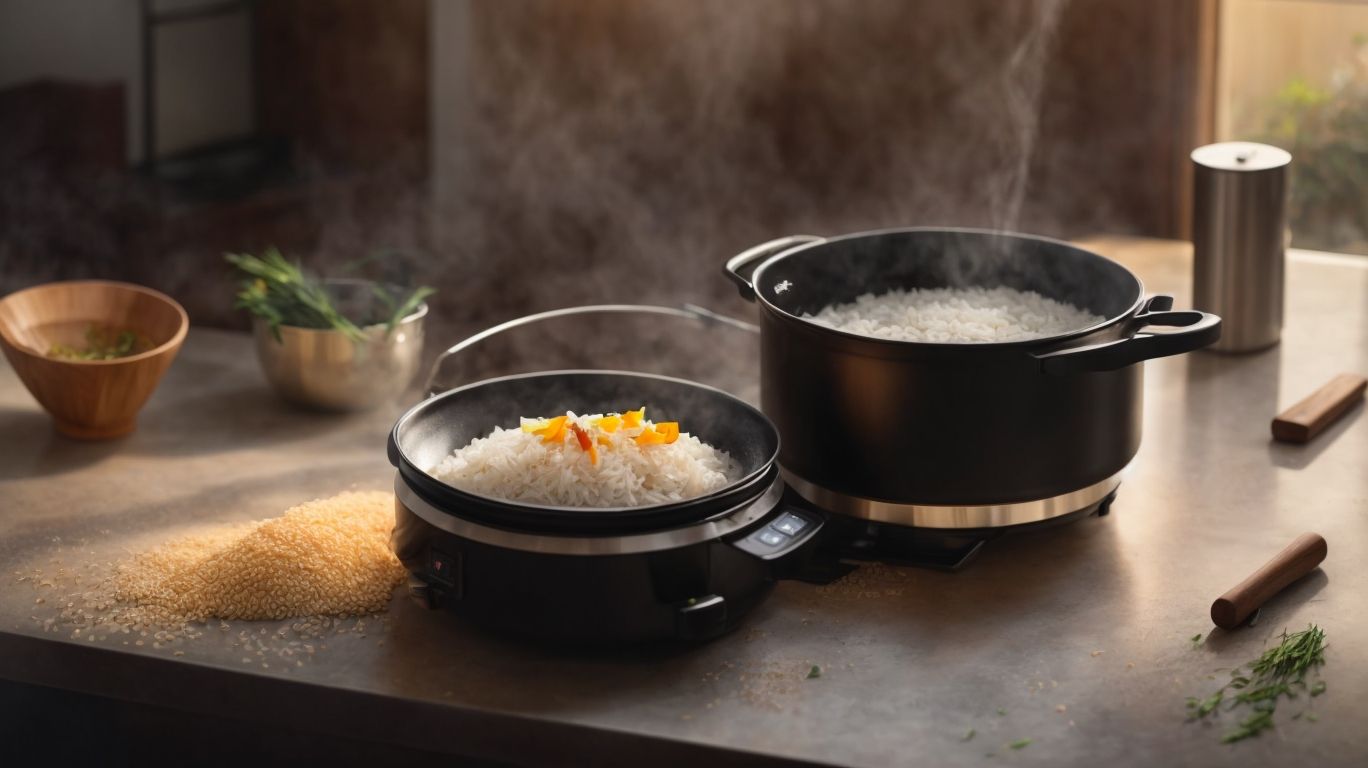
Credits: Poormet.Com – Anthony Flores
Follow these step-by-step instructions to cook rice using the absorption method, ensuring perfectly fluffy and separated grains every time.
To begin, measure out the desired amount of rice using a measuring cup. Use a ratio of 1:2, one part rice to two parts water. For example, if you are cooking one cup of rice, add two cups of water. Rinse the rice under cold water in a fine-mesh sieve until the water runs clear to remove excess starch. This step will help prevent the rice from becoming too sticky during cooking.
Measure and Rinse the Rice
The first step in the absorption method is to measure the rice accurately and rinse it under running water to remove excess starch for fluffier results.
Measuring the rice precisely is crucial to ensure the proper rice to water ratio, which directly impacts the final texture and consistency of the cooked grains. By rinsing the rice, you not only remove excess starch but also any impurities, leading to a cleaner taste. This process also prevents the rice from becoming overly sticky or mushy, allowing for a light and fluffy texture that is more enjoyable to eat.
Add Water and Bring to a Boil
After rinsing the rice, add the calculated amount of water to the pot and bring it to a boil to initiate the cooking process and allow the grains to absorb the liquid.
Ensuring that the water-to-rice ratio is correct is crucial at this stage, as it determines the texture and consistency of the final result. As the temperature rises and the water begins to boil, the rice grains start to swell and absorb the surrounding moisture, creating that fluffy and tender finish we all love.
By having the water at a rolling boil, you set the foundation for the absorption phase to begin effectively. The process of simmering at the right temperature post-boiling ensures that each grain cooks uniformly, resulting in perfectly cooked rice.
Reduce Heat and Simmer
Once the water reaches a boil, reduce the heat to a simmer, cover the pot with a tight lid, and let the rice cook gently until all the liquid is absorbed.
Simmering the rice after boiling is a crucial step in achieving perfectly cooked rice. When you simmer the rice, it allows for the grains to absorb the remaining liquid slowly and evenly, resulting in fluffy and tender rice. By covering the pot with a tight lid, you create a sealed environment that traps the steam inside, maintaining a consistent temperature throughout the pot. This controlled heat ensures that every grain of rice receives the necessary time to cook thoroughly, promoting uniformity in texture and flavor.
Let it Rest and Fluff with a Fork
After cooking, allow the rice to rest off the heat for a few minutes, then fluff it with a fork or paddle to separate the grains and enhance the texture.
Once the rice has finished cooking, resting it off the heat is a crucial step in the absorption method. Letting the rice sit for a short while allows the steam to redistribute within the grains, resulting in a more uniform texture. This resting period also helps to finish the cooking process gradually without the risk of overcooking.
When you’re ready to serve, gently fluff the rice with a fork or paddle. This simple action separates the grains and prevents clumping, giving you light, fluffy rice every time. The light fluffing also aerates the rice, releasing any excess moisture and ensuring a pleasant mouthfeel. So, don’t rush this step – give your rice the time it needs to achieve its full potential!
Tips and Tricks for Perfect Rice Every Time
Follow these expert tips and tricks to ensure your rice turns out perfect every time using the absorption method, from water ratios to fluffing techniques.
Regarding water-to-rice ratios, the golden rule is typically 1 part rice to 2 parts water. This can vary depending on the type of rice you are using, so always check the packaging for specific instructions. Measuring your water accurately is crucial to prevent your rice from turning out too mushy or undercooked. Once your rice is cooked, avoid stirring it immediately; instead, let it sit covered for a few minutes before gently fluffing it with a fork to separate the grains without breaking them.
- Avoid lifting the lid while the rice is cooking to prevent steam from escaping, which could lead to uneven cooking.
- If you find your rice is still undercooked at the end of the cooking time, add a splash of hot water and let it continue to steam.
- To enhance the flavor of your rice, consider using broth or adding aromatics like garlic, onions, or bay leaves to the cooking water.
Use the Right Ratio of Rice to Water
Achieving the perfect rice texture relies on using the correct ratio of rice to water, ensuring that the grains cook evenly and result in a fluffy, flavorful dish.
Regarding cooking rice using the absorption method, the water ratio plays a pivotal role in determining the outcome. Too much water can leave you with a soggy, mushy mess, while too little water can yield dry and undercooked grains. The optimal rice-to-water ratio provides the necessary moisture for the rice to expand and absorb flavors during the cooking process.
For most types of white rice, a general rule of thumb is to use a 1:2 ratio of rice to water. This balance allows the rice to absorb the water effectively without becoming overly wet or sticky. Different varieties of rice may require slightly adjusted ratios to achieve the desired results.
Don’t Peek or Stir the Rice
Resist the temptation to peek or stir the rice while it’s cooking, as this can disrupt the absorption process and lead to unevenly cooked grains.
When the rice is simmering away under that lid, it’s essentially creating its own steam bath, which is crucial for achieving perfectly fluffy grains. Every time you lift the lid, you release that steam, slowing down the cooking and interfering with the absorption of liquid. Remember, the lid acts as a seal, maintaining the ideal environment for the rice to cook evenly and thoroughly.
Let it Rest Before Fluffing
Allow the cooked rice to rest for a few minutes after turning off the heat before fluffing it with a fork, enabling the grains to settle and attain the desired light texture.
By letting the rice rest, you are giving it time for the moisture within the grains to redistribute evenly, which helps in achieving a fluffy and cohesive texture throughout. This resting period also allows the starches in the rice to firm up slightly, making it less likely to clump together when fluffed. The result is a more distinct and separate grain structure, perfect for dishes like fried rice or pilaf. So, remember, patience is key when it comes to achieving that ideal rice consistency!
Conclusion
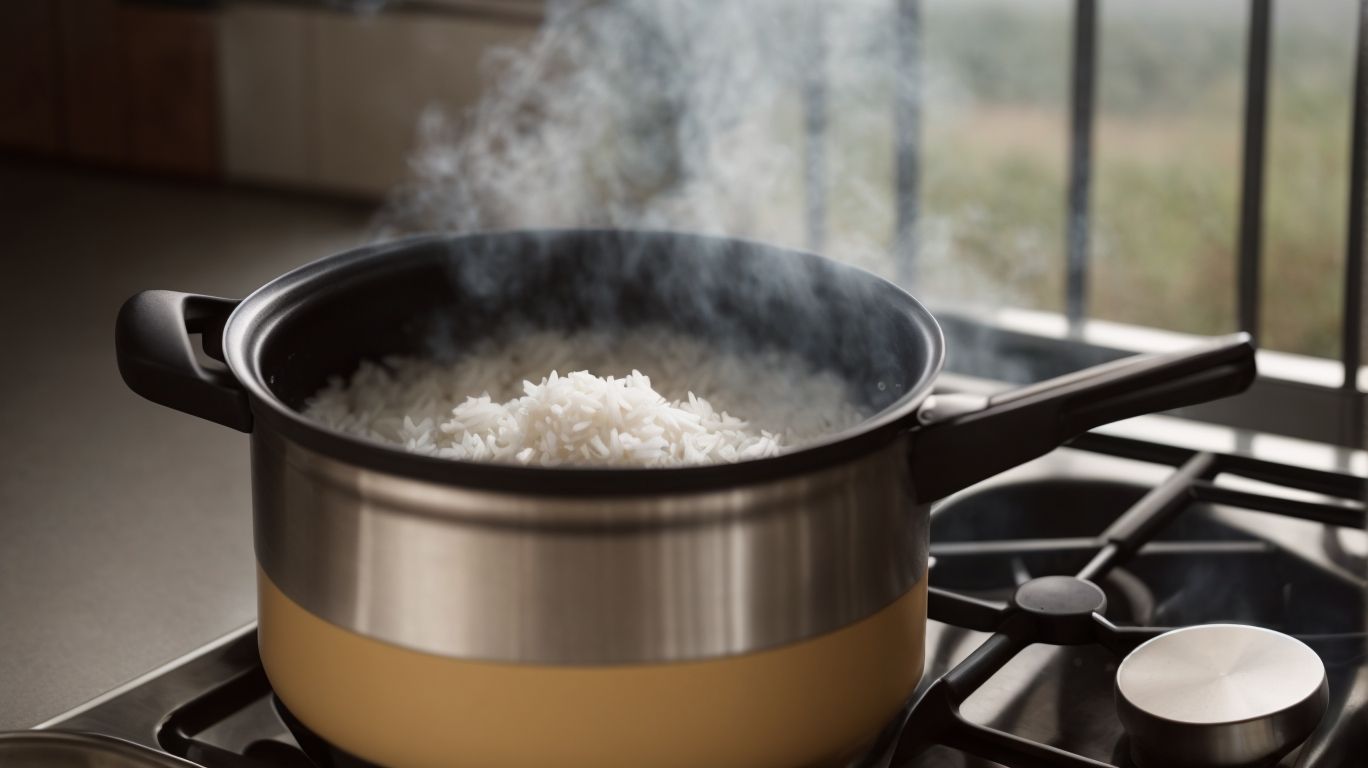
Credits: Poormet.Com – Scott Garcia
The absorption method of cooking rice offers a straightforward yet effective technique to achieve fluffy, perfectly cooked grains ideal for various culinary creations.
One of the standout advantages of this method is its simplicity – no fancy equipment or special skills are needed. All you require is a pot with a lid, rice, water, and a stove. The process itself is quite forgiving, making it beginner-friendly. By allowing the rice to absorb water gradually, each grain becomes evenly cooked, resulting in a delightful texture that pairs well with a variety of dishes.
FAQs about Cooking Rice by Absorption Method
Explore common queries and answers related to cooking rice using the absorption method to enhance your culinary skills and achieve consistent results.
Regarding choosing the right type of rice for the absorption method, long-grain varieties like Basmati or Jasmine work exceptionally well, yielding fluffy grains with distinct flavors. For those seeking a nuttier taste, consider using brown rice or wild rice varieties. To enhance the flavor of your rice, you can infuse the cooking water with fragrant herbs and spices such as bay leaves, cinnamon sticks, or cardamom pods. For storing cooked rice, it’s advisable to refrigerate it in an airtight container and consume it within two to three days to preserve its freshness and taste.
Can I Use This Method for Different Types of Rice?
The absorption method can be adapted for various types of rice, including basmati, long grain, and converted rice, offering versatility in achieving the desired texture and flavor profiles.
When preparing basmati rice using the absorption method, it is crucial to rinse the rice thoroughly before cooking to remove excess starch and prevent clumping. Using a slightly lower water-to-rice ratio can help maintain the distinct long grains and prevent mushiness.
For long grain rice, adjusting the cooking time may be necessary to ensure the grains are fluffy but not overly dry. Draining any excess water after cooking can also help prevent sogginess and maintain the rice’s individual grains.
When cooking converted rice, which has been partially pre-cooked and dried before packaging, adapting the absorption method may involve using less water and a shorter cooking time to prevent the rice from becoming overly soft or sticky.
How Can I Add Flavor to the Rice?
Enhance the flavor of your rice cooked via the absorption method by incorporating aromatic spices, herbs, or flavored oils during the cooking process for a delightful culinary experience.
One popular method to infuse your rice with enticing flavors is by using aromatic spices such as cloves, cardamom, or cinnamon. These spices not only add a fragrant essence but also enhance the overall taste profile of the dish.
Incorporating fresh herbs like cilantro, parsley, or mint can bring a refreshing and vibrant element to your rice preparation. The natural oils present in these herbs complement the absorption cooking method, ensuring the flavors meld seamlessly into each grain.
If you prefer a subtle yet distinct flavor, consider using infused oils like garlic-infused olive oil or chili-infused sesame oil. These oils add depth and complexity to your rice, elevating it to a gourmet level while maintaining compatibility with the absorption cooking technique.
Can I Store Leftover Rice Cooked by This Method?
Leftover rice cooked using the absorption method can be stored in airtight containers in the refrigerator for a few days, maintaining its texture and flavor for convenient meal planning.
It’s essential to let the rice cool completely before transferring it to the containers, as storing warm rice can lead to bacterial growth.
If you anticipate not using the leftover rice within the next few days, consider freezing it for longer storage.
Freezing rice can help preserve it for up to a few months, ensuring you always have a quick and easy side dish or base for stir-fries on hand.

